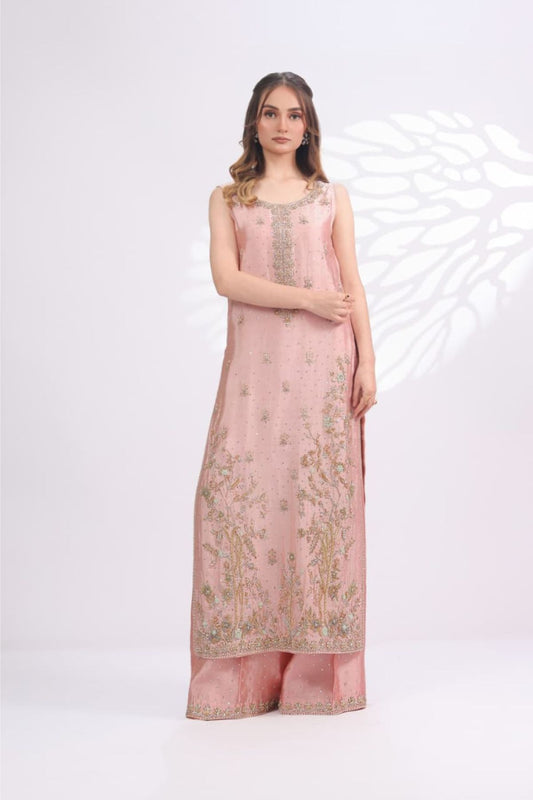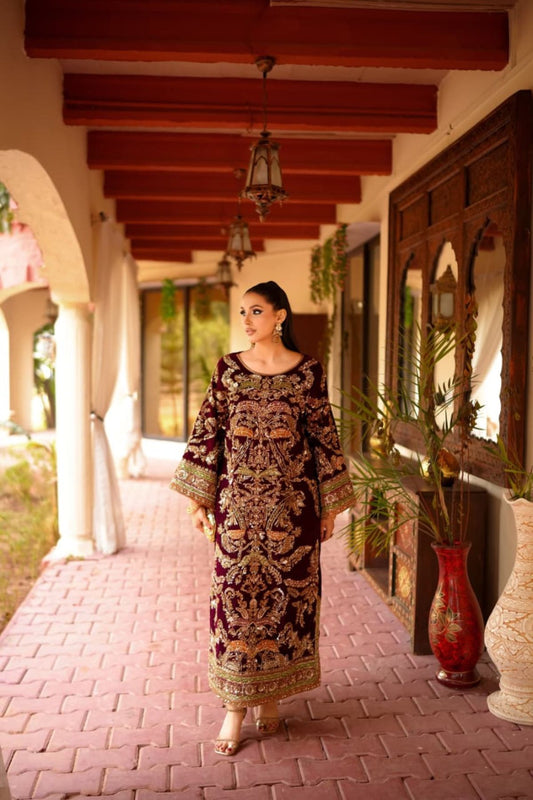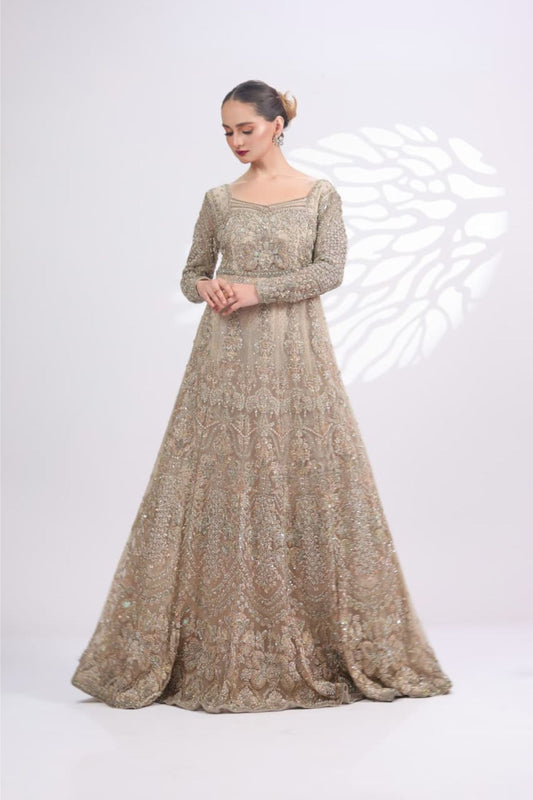Styling Tips for Bridal Dupattas and Veils
Introduction to Bridal Styling
Bridal fashion is a universe of elegance and cultural richness, where every detail contributes to the grandeur of the bride's appearance. As you curate the perfect bridal ensemble, it’s essential to understand how various elements harmonize to create an unforgettable look. From the resplendent gown to intricate jewelry, each component plays a vital role — and among these, dupattas and veils stand out as iconic pieces that add layers of beauty and sophistication.
These accessories are more than just additions; they are pivotal in enhancing the bridal and bridal dresses aura. The way a dupatta drapes over your shoulders or a veil cascade down your back can transform your entire appearance. Mastering the art of styling these pieces can truly elevate your bridal look.
In this guide, you'll explore various styles, fabrics, and draping techniques tailored to your taste and cultural preferences. Whether you're embracing tradition or opting for a modern twist, the following sections will provide expert tips to help you choose and wear dupattas and veils with confidence and elegance.

The Importance of Dupattas and Veils in Bridal Fashion
In bridal fashion, wedding dresses, dupattas and veils are more than ornamental pieces — they symbolize grace and tradition. These accessories complement the bridal outfit and accentuate the bride's features. A well-chosen dupatta or veil adds dimension, color, and texture, helping you stand out on your special day.
Dupattas, a staple in South Asian bridal attire, are versatile and can be styled in various ways to reflect cultural significance. Whether you choose a heavily embroidered piece or a simple sheer fabric, the dupatta enhances the overall aesthetic of your ensemble. Veils, synonymous with Western bridal traditions, offer elegance and mystery. With variations in length, style, and embellishment, they allow for a unique expression of personality.
By understanding their importance, you can make choices that align with both your wedding theme and personal style. The following sections will explore the types, styling techniques, and cultural meanings behind these essential bridal components.
Types of Dupattas and Their Styling Techniques
When it comes to dupattas, the variety is truly extensive, offering options for every taste and wedding theme. The main types include:
- Chiffon Dupatta: Light and airy, perfect for summer weddings.
- Silk Dupatta: Luxurious and rich party wear, ideal for winter ceremonies.
- Net Dupatta: Sheer and elegant, adds a modern touch.
- Banarasi Dupatta: Traditional and opulent, often featuring intricate designs.
- Phulkari Dupatta: Embroidered with vibrant colors, reflecting cultural heritage.
Each type can be styled in multiple ways to enhance your bridal look. For a regal appearance, drape a silk dupatta over both shoulders, letting it flow down the back. For a modern touch, pin a net dupatta on one shoulder to create an asymmetrical effect.
Draping techniques can dramatically transform your look. A front pallu style adds a classic touch, while a side drape gives a contemporary vibe. Trying out different styles will help you discover what best complements your outfit and body type. The right draping method not only enhances your silhouette but also adds sophistication to your ensemble.

How to Choose the Right Veil for Your Wedding Dress
Selecting the perfect veil involves considering your dress style, face shape, and personal preference. The veil should complement your gown without overshadowing it. Key factors to keep in mind include:
- Veil Length: Options range from the short and sweet birdcage veil to the dramatic cathedral veil. Match the length to the formality of your wedding and the style of your dress.
- Veil Style: Choose between simple, unadorned veils or those with lace, embroidery, or beading. A heavily embellished veil works well with simpler dresses, while a plain veil can complement a more ornate gown.
- Face Shape and Hairstyle: Your veil should flatter your face shape and work with your chosen hairstyle. For example, a cascading veil suits long, flowing hairstyles, whereas a blusher veil complements an updo.
Though veils are rooted in tradition, they offer room for personal expression. You might choose one with colored accents to match your wedding theme or incorporate heirloom lace for sentimental value. By considering these elements, your veil will enhance your overall look and seamlessly integrate into your bridal ensemble.
Expert Tips for Draping Dupattas Elegantly
Mastering the art of draping a dupatta can significantly enhance your bridal look. Here are some expert tips to ensure an elegant presentation:
- Secure with Pins: Use discreet pins to hold the dupatta in place. This not only ensures that it stays put during the ceremony but also helps in maintaining the desired drape.
- Balance and Symmetry: While experimenting with styles, ensure that the dupatta is balanced and symmetrical. An uneven drape can detract from the overall look.
- Complement Your Gown: The draping style should complement the cut and design of your gown. For instance, if your dress has intricate embroidery on the bodice, consider a style that showcases this detail.
Practice different draping styles well before your wedding day to determine which suits you best. This will allow you to move with ease and grace, enhancing your confidence as you walk down the aisle. Remember, the goal is to highlight the beauty of both the dupatta and the gown, creating a harmonious and captivating bridal look.
Veil Lengths and Their Impact on Your Bridal Look
The length of your veil can drastically alter the impact of your bridal look. Here are common veil lengths and their effects:
- Birdcage Veil: Covers part of the face, offering a vintage, chic appeal.
- Shoulder-Length Veil: Ends at the shoulders, ideal for informal weddings.
- Elbow-Length Veil: Reaches the elbows, suitable for both formal and casual ceremonies.
- Fingertip Veil: Extends to the fingertips, versatile for most dress styles.
- Chapel Veil: Trails slightly on the floor, adding a touch of formality.
- Cathedral Veil: Extends well beyond the gown, perfect for grand, traditional weddings.
Each length creates a distinct visual effect and should align with the tone of your wedding. Shorter veils are practical and modern, while longer veils bring drama and sophistication. Trying on various lengths with your gown can help you find the one that complements both your dress and the overall atmosphere of your celebration.
Accessorizing Your Dupatta and Veil: Dos and Don'ts
Adding accessories to your dupatta and veil can further enhance your bridal ensemble, but it's crucial to strike the right balance. Here are some dos and don'ts to guide you:
Dos:
- Coordinate Colors: Ensure that your accessories match or complement the colors of your dupatta and veil.
- Consider the Occasion: Choose accessories that reflect the formality and theme of your wedding.
- Balance with Jewelry: If your veil or dupatta is heavily embellished, opt for simpler jewelry to avoid an overwhelming look.
Don'ts:
- Over-Accessorize: Avoid wearing too many embellishments that could distract from the overall elegance.
- Ignore Comfort: Make sure that the accessories do not interfere with your comfort or movement.
- Mix Contrasting Styles: Stay consistent with the theme of your bridal look to ensure cohesion.
By following these guidelines, you can enhance your bridal ensemble without detracting from the beauty of the dupatta and veil. Proper accessorizing can add a personal touch, reflecting your unique style and making your bridal look truly one-of-a-kind.

Conclusion
As you prepare for your wedding day, remember that the right dupatta or veil can elevate your bridal look, adding beauty, tradition, and a touch of personal style. By understanding their types, styling options, and cultural significance, you can make choices that truly enhance your ensemble.
Embrace the process of exploring textures, colors, and draping techniques. With the insights shared here, you're well-equipped to create a look that is both elegant and uniquely yours. As you walk down the aisle, let your dupatta or veil reflect your journey and heritage. Wear your bridal ensemble with confidence, knowing it’s a true expression of who you are.






